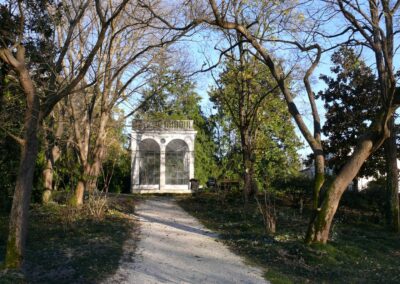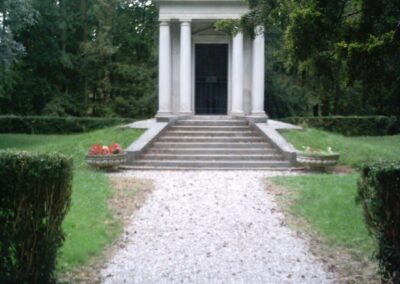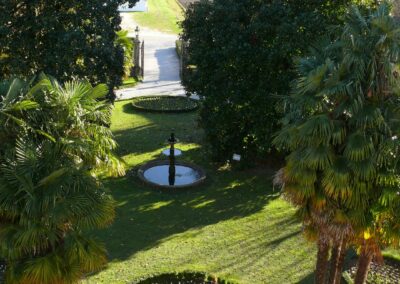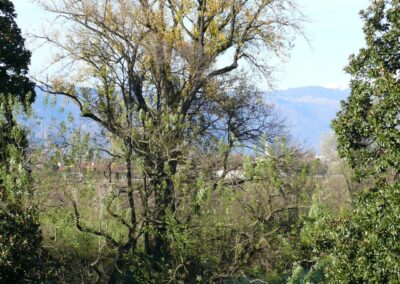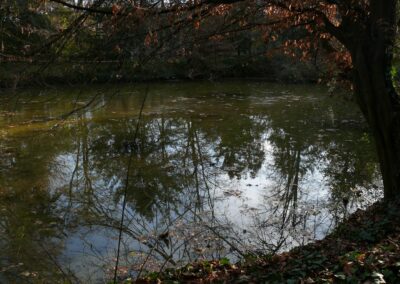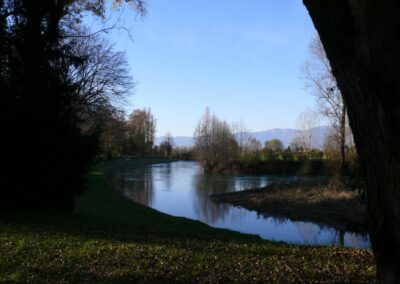The grounds
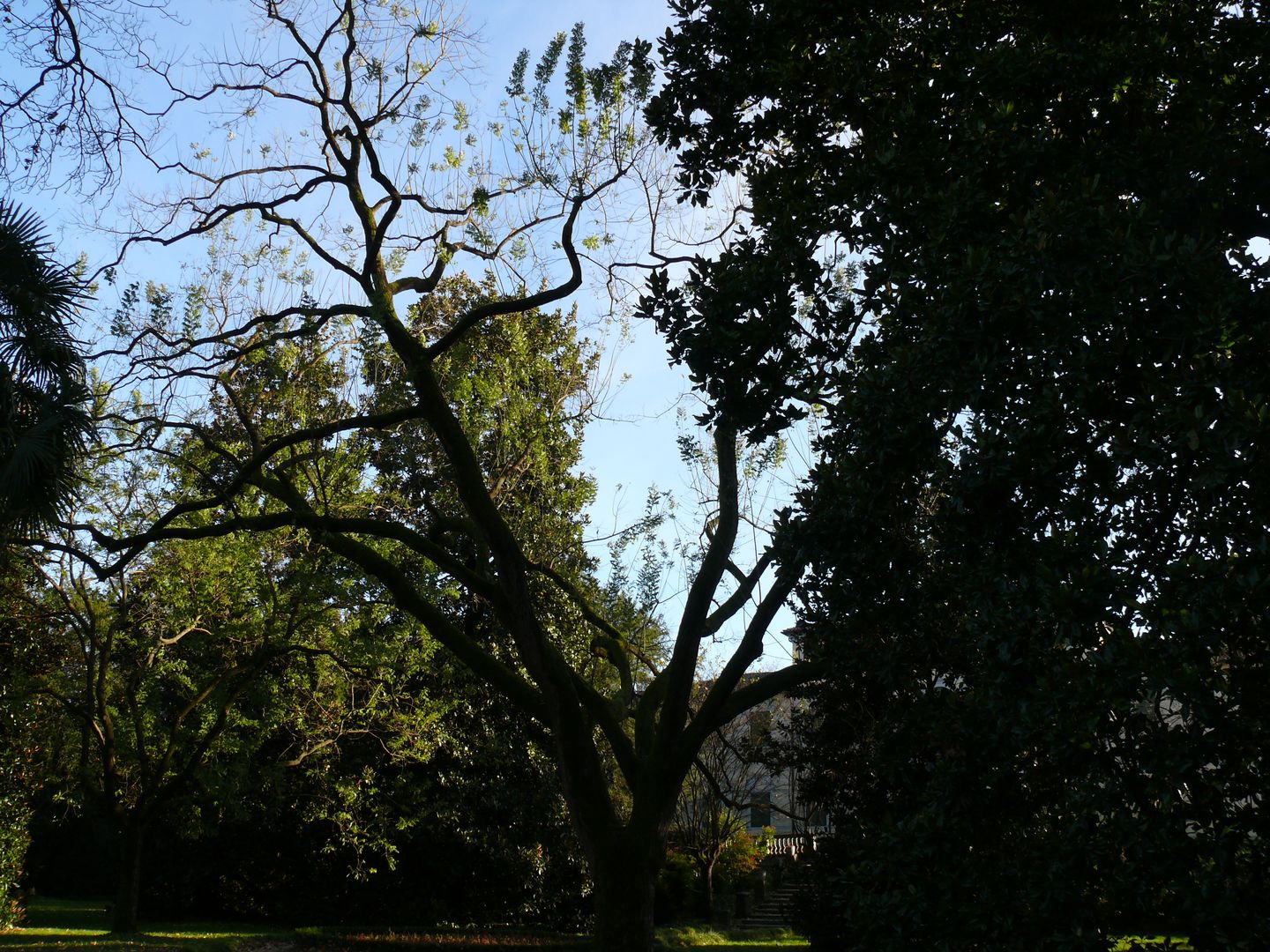
Opening times of the grounds
SUMMER: from 8:00 am to 8:00 pm
WINTER: from 8:00 am to 4:00 pm
PLEASE NOTE: NO DOGS ALLOWED
THE VILLA
The grounds
The Villa Varda grounds were given their current layout in the second half of the 19th century, when a man named Carlo Marco Morpurgo from a wealthy family in Trieste bought the estate and began renovating the buildings and shaping an English landscape garden. The park was given the form it has today and was – and continues to be – considered one of the finest examples of the tastes of the time. This is underlined by the fact that a number of panels portraying Villa Varda were included in an exhibition of Italian gardens at Palazzo Vecchio in Florence in 1931.
The grounds stretch out for 18 hectares along the course of the Livenza River. Instead of having a formal layout, they are arranged in an informal, picturesque way. The only exception comes in the form of the plants and flowers in the parterres en broderie near the building. In accordance with the standard late 19th century approach, they reflect the Renaissance style of the villa. Thriving cedars stand tall around the gardens. The height of the trees decreases as you move towards woods containing plants typically found in the lower Friulian plain, thus making the landscape look particularly attractive to the roving eyes of visitors.
The designer of this spellbinding spot made the most of its intrinsic qualities and brought out the best of the enchanting effects that were already naturally present. Behind the villa, in the foreground there is a little parterre garden and then the view extends beyond the stone balustrade towards a backdrop formed by dense, shady vegetation. Light shines through an opening in the latter and it is reflected and softened by the water flowing in the river.
Essentially, the park combines the classical style of the building with an informal layout steeped in historical memories. Sections from different times are seamlessly fused in a highly captivating overall image.
A predominant role in the park is played by the avenues lined with tall, slender linden trees. They give a geometric structure to the entire area, framing the lawns and facilitating agricultural work. Clear, bright and simple arrangements of this kind were common in parks in the region that were created towards the end of the 19th century, such as the grounds of Villa Policreti in Castel d’Aviano and those of the Marchi family in Pordenone. It is a choice that rejects a grandiose approach and underlines the authentically rural nature of our gardens. It is one of the defining characteristics of 19th century parks in Veneto and Friuli, which adapted classic, romantic English gardens to suit local traditions and the resources that were available.

